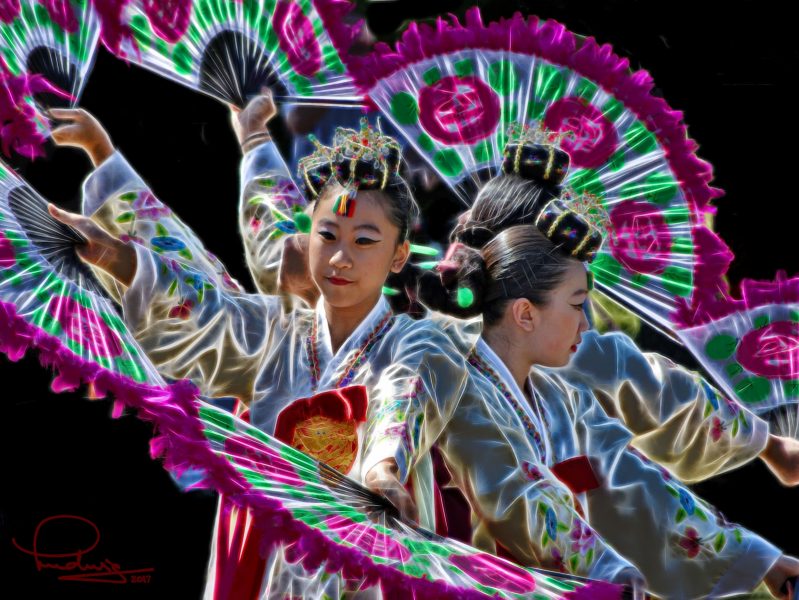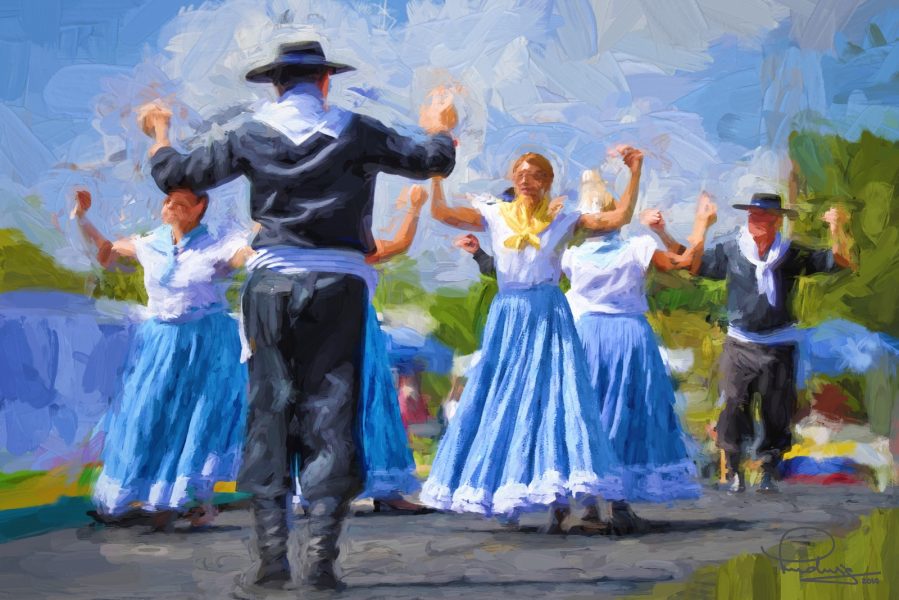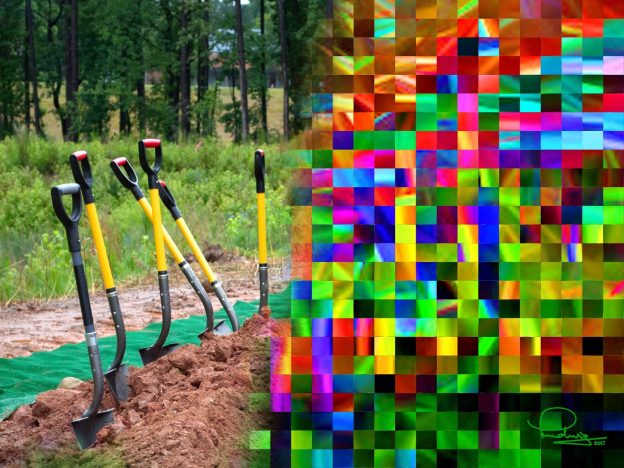When is a Photograph Not a Photograph?
Our illustration here shows an image of a worksite with some shovels stuck in dirt on the left. Clearly that is a photograph. Then it blends into some colorful “satin tiles”, digital art, on the right. It is even signed. Clearly not a photograph. Yet the right part was derived from the photo of the work site, it is a digital manipulation. It would be quite a stretch, and unacceptable by most, to call the right part a photograph.
We have wonderful digital tools these days that permit us to do magical and imaginative things. These tools allow us to use an image as if it were just paint on a brush and let our creativity roam. An art form usually called “digital art”. Let’s take a look at a couple more images.


Here we have another photograph and a, well, digital art. We are getting closer to the question of our topic. Any doubt in your mind as to the distinction? Would it matter if I told you that I spent more time on post-processing the image of the building than the one of the dancers? Would it matter that I removed a sign in front of the bushes and a gutter grate from the drive to avoid those distracting elements? Is the image of “The Little White House” still a photograph?
Since the earliest days of photography the artists have processed, post-processed, edited, retouched, enhanced, and changed the images produced by their cameras. Rarely is an image straight from the camera fit for publication. A photographer plays her camera like a violinist plays his violin. The setting, the subject, the time of day, the light, the arrangement of the details, the camera settings to control what is sharp, what is blurred, all play into what will become a photograph. Once the shutter is snapped, a whole other process begins. In the early days that was done with chemistry in film processing and repeated in the printing process that also involved many other tricks.
Nearly seventy years ago I was an apprentice to a master photographer. He taught me the details of camera operation, managing the setting, the art of the chemistry and much more. He also taught me to use a brush, sometimes with just a single hair, and the mixing of the dyes to retouch the image. Small defects and distracting details, especially in portrait work, had to be removed or modified to produce a pleasing and natural image. He always stressed that my retouching work must be so perfect that no one will ever notice it. There was never any thought that our work was anything other than photography.
Nowadays photographs still require the master’s touch. Sometimes we soften the wrinkles in an aged face, because when we see the person in life, we do not really notice them. Sometimes we remove a distracting blemish because it is temporary and not truly a part of the parson. That goes for landscapes and other photographs as well.
A photographer captures not only an image with his camera, but also with his mind. We see things that others experience differently. We want to share what we saw, and how we saw it, with the viewer. The camera, no matter how finely crafted the optics, how precise the sensor technology, does not match our eye and our vision. Yet, in the final image the photograph takes the viewer to the place, the subject, the moment in time, and sees what the photographer saw. The expert photographer brings the viewer to the subject so directly that there is no hint of the photographer’s intervention. It is as if she had stepped aside, behind the curtain, and left the viewer all alone with the subject. That is what I call a photograph.
Yet the tools of the trade permit us to go beyond reality and bring our dreams to life in our images. Here are two more of my art.


You can no longer identify the dancers. The identify of the individuals has been replaced by their art. I have tried to present not the dancer, but her art, her embodiment of music. The rustic Spanish scene is no longer a specific place, no longer a moment in time. but a feeling, an experience of joy. Clearly these are no longer photographs. These images make subject, place, time, vanish. The viewer is taken into the artists dreams.
I have shown and described photography and I have explained my feelings about digital photo manipulations. A photograph takes the viewer very directly to a subject, digital art presents the artist’s interpretation of a subject. Since the latter is derived from the photograph there is a boundary between the two forms of art. The question, “when is a photograph no longer a photograph”, is a valid one, but is it relevant? When does that transition from reality to vision happen? What guards that border?
For most artists the question is not relevant until the work is presented to a curator of a gallery, to an editor of a publication, and has to answer, “what is the medium?” The creator may feel that she is a photographer, who are we to argue? Can you make the call?
Allow me to present one more variation on the shovels. With this work I do not see a photograph.

First published in Our Arts Magazine on September 28, 2017


You must be logged in to post a comment.